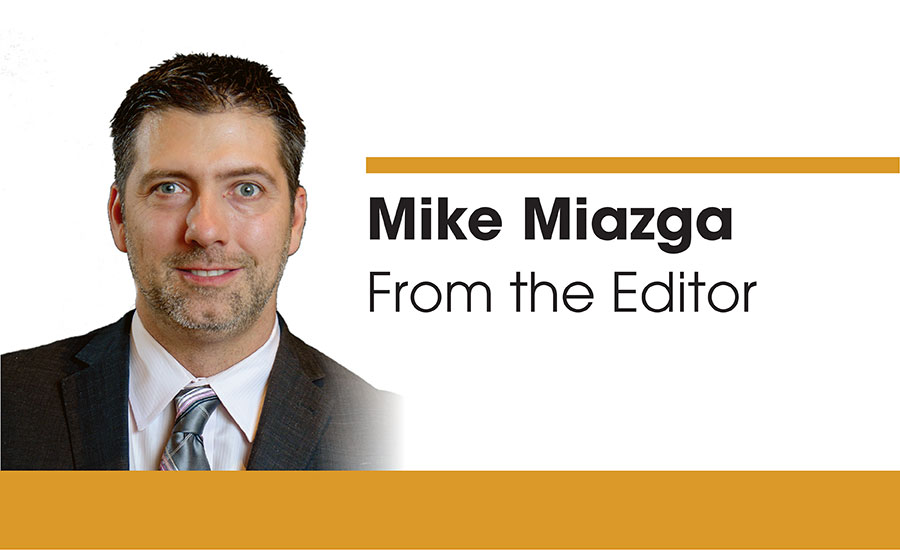The title of this month’s column hits home for us here in BNP Media’s Plumbing Group, which includes this very issue of Plumbing & Mechanical you are reading.
I am excited to announce two new hires to our editorial team. In late 2018, Ed McMenamin took over as chief editor of sister publication PM Engineer (pme) and has done nothing but hit the ground running. Some of you may have met Ed last month in Atlanta at AHR Expo. After you’re done reading this issue cover to cover, I encourage you to skedaddle over to PMEngineer.com and check out Ed’s story on legionella and how it relates to codes. You’ll instantly see why we’re so pumped to have him on our team.
And on Feb. 1, Nicole Krawcke officially took over as the chief editor of PM. Nicole, like Ed, is no stranger to BNP Media, having worked on our sister weekly HVACR powerhouse THE NEWS for the last four years as its web editor. Nicole already is familiar with some of the manufacturers in our industry and some of you may have met her as well in Atlanta. She’ll take over this space in the March issue and, again, it won’t take you long to see why there are exciting times ahead for PM. She’s the real deal. If you’d like to reach out to Nicole in the interim here, her email address is krawcken@bnpmedia.com.
While I’m on the topic of the workforce, we all know there is a major problem staring at us throughout the PHCP-PVF supply chain. One, the average age of a plumber is in the 50s, and simple math tells us a good chunk of the industry’s experienced workforce will be retiring in the decently near future. You couple that with the well-documented struggles the supply chain is having with attracting new and skilled talent and you have the perfect storm known as a labor shortage.
Back in October, I had a chance to hear Eric Chester speak about the topic of hiring and retaining great techs at PHCC’s national convention in Albuquerque, New Mexico. Chester, who bills himself as the “expert on finding, engaging and keeping great employees,” had plenty to say on the topic during PHCC’s opening breakfast event.
Chester suggests companies stop fishing for quality employees and begin to actively hunt them. “You can send out an ad and hope that a prize-winning trout will eat the bait,” he said. “You can’t manufacture them and you can’t rely on technology to fill them. You need skilled workers.”
The hunting, Chester said, should occur with friends, in schools, on social media and with the competition. “Am I openly advocating taking the competition’s best people? Yes!” he said.
Chester has a list of what he calls non-negotiables when it comes to employee traits. That list includes positive, reliable, professional, initiate, respect, integrity and gratitude. “I don’t think you would knowingly hire anybody who is deficient in those core values,” he said.
At the same time, Chester pointed out to the Albuquerque audience that employees have their own non-negotiables list that includes compensation, alignment, atmosphere, growth, communication, acknowledgement and autonomy. Can your firm check off all these boxes?
“This is what every person you want in your organization wants from you,” Chester said. “What are you doing to create an atmosphere where people say, ‘I like to work here?’ Are you offering a career path? Nobody wants to work 59 years doing the same thing.”
Those employee non-negotiables all filter into a company’s culture. Chester suggests taking a long and hard look at your company’s culture. “You can’t fix your culture if you don’t know it’s broken,” he said. “The only way to attract and retain great techs is to offer a culture that your competition can’t match.”
Chester cited outdoor equipment/clothing manufacturer REI as a key example of a company with a superior workplace culture. “REI is closed on Black Friday,” he said. “Values-based companies attract talent. What can you do to make people feel they are part of something bigger than themselves? Motivation is like Chinese food. You eat it and an hour later you are hungry. Create an environment and atmosphere that inspires people. What can you do to delight your people?”
Chester cautions, however, that all of this doesn’t come with the snap of the fingers. “You only get out of it what you put in,” he said. “Spend the time to create a culture and atmosphere that will attract great people.”
How does your company’s culture stack up?




